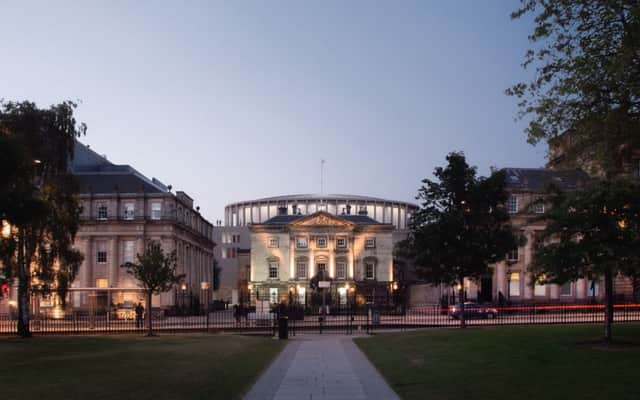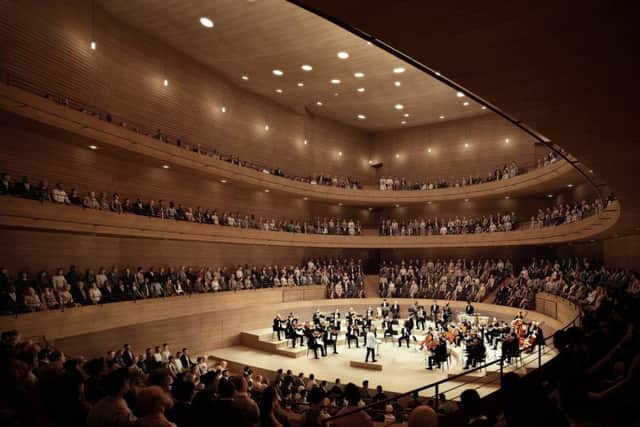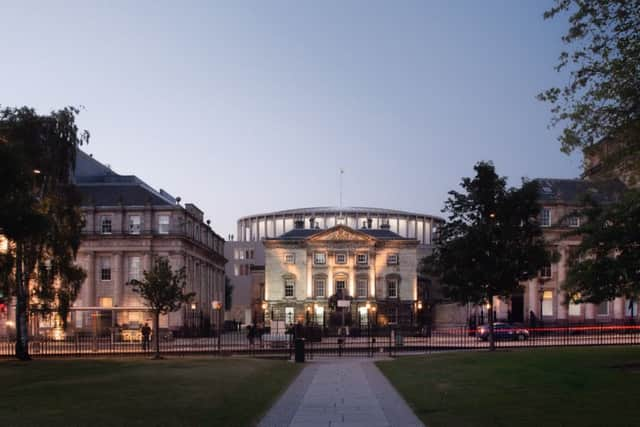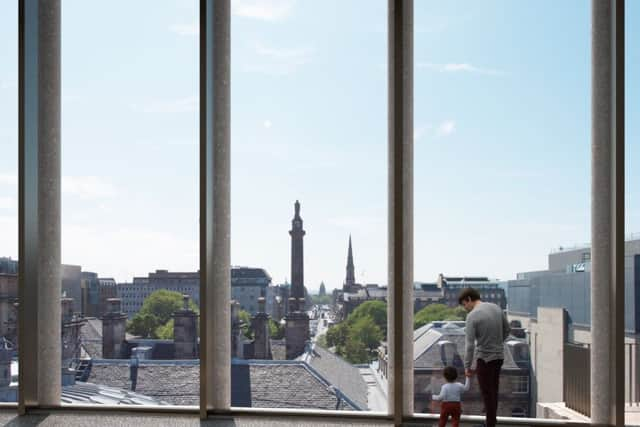Plans for Edinburgh's first new concert hall in more than a century revealed


The 1,000-capacity auditorium will have a rooftop dome, glass-covered walkway and outdoor terraces, under Sir David Chipperfield’s vision for the £45m Impact Centre, which could open by 2021.
The complex, which will provide a long-awaited home for the Scottish Chamber Orchestra, is also expected to become a major new Edinburgh International Festival venue.
Advertisement
Hide AdBilled as a “younger sister” to the Usher Hall, which opened in 1914, its design will be suitable for classical, world, pop, jazz, folk and electronica, as well as comedy and spoken-word events. A smaller studio will host 200-capacity shows.


Sir David said the egg-shaped complex had been designed to respect its historic New Town surroundings, including RBS’s historic head office with its dome-roofed banking hall, while avoiding the “big blank box” look of many new venues.
Its colonnade-style “crown,” which will be open throughout the day, will offer views across the city, although the venue’s maximum height will be lower than a controversial neighbouring hotel scheme.
Even though it is earmarked for a site off St Andrew Square hidden by the bank’s Dundas House, Sir David hopes the venue will become a new “cultural community centre,” bustling with activity throughout the day, even when no concerts are on, comparing it to London’s Royal Festival Hall .
Although RBS is keeping its Dundas House branch open for the foreseeable future, a direct link to the Impact Centre’s foyer will be created to allow concert-goers access for some events. The venue will also be accessible from two other new developments, The Registers and St James, which are taking shape in the area.


The project, which been in the planning stages for several years, has already won £25 million worth of backing from the Scottish and UK governments, and the city council. It is being bankrolled by the Dunard Trust, one of the biggest privately-funded supporters of the SCO and EIF, with several major donations made since a £10m appeal was launched last year.
Advertisement
Hide AdSpeaking as detailed plans were lodged with the council, Sir David said previous cultural projects, including the Hepworth Wakefield arts centre in Yorkshire and Turner Contemporary gallery in Margate, had been successful in oveturning perceptions of culture as “elitist” or “for toffs.” Sir David said: “A cultural building of this importance in the middle of a city like Edinburgh, and in particular the New Town, is a fantastic challenge. We tend to gravitate towards public cultural buildings and complex settings. We didn’t really need to be encouraged to tackle this site.
“Contemporary society is realising that cultural part of the glue is cultural buildings. Museums, galleries, theatres and music venues were always rather regarded as temples.
Advertisement
Hide Ad“We’ve been involved in projects which would historically have been regarded as elitist and inappropriate in areas like Margate and Wakefield, which are attracting more than 300,000 visitors a year. They’ve become almost like cultural community centres more than anything else. That is the ambition with this project. If you look at the Royal Festival Hall in London its foyer is always packed.”


Sir David admitted there were “severe urban challenges” with the site, currently occupied by empty offices.
He added: “You need a high volume of seating with concert halls, but they normally just stick out. Rather than have a big blank box, our solution is to turn the roof into a classical colonnade, which also has the advantage of becoming a place where people can go up and look out over the city.
“The designs have been produced after continuous dialogue with the council. There has been an understanding that the venue has to be a certain size and that it will not hide behind Dundas House. That is unavoidable.”